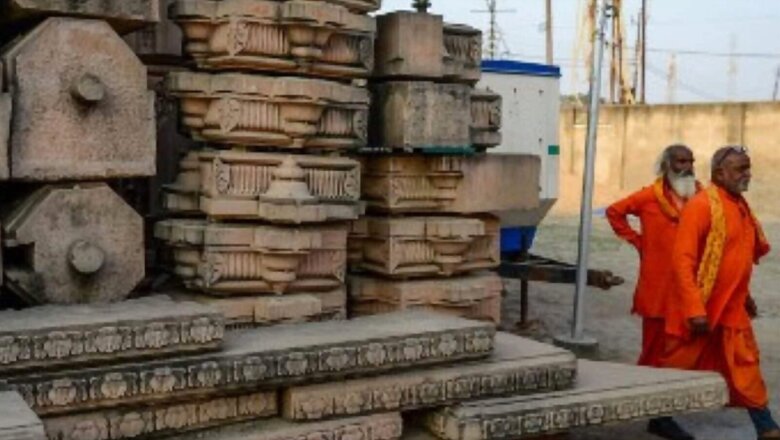
views
The work of filling the excavated site of the Ram Temple in Ayodhya, Uttar Pradesh, is nearly complete in a record time, the preliminary masterplan for the entire campus is also ready and the plan to enable devotees to have darshan of Lord Shri Ram by the year 2023 seems within reach now, the Ram Temple Trust has said.
In a statement, the Temple Trust said that at a recent review meeting on construction of the Ram Temple held on 27-29 August, it was noted that the construction work of the temple is proceeding as per schedule.
“After excavation to a depth of 12 metres and removal of debris from an area of 18,500 sq mt, the work of filling the excavated site is nearly complete in a record time. Larsen & Toubro, the implementing agency and Tata Consulting Engineers, Project Monitoring Committee, have performed efficiently to complete the activity in about five months against the original estimate of about 18 months,” the Temple Trust has said.
The Trust also said that the preliminary masterplan for the entire campus outside the Parkota has been prepared and the suggestions of respected saints and sadhus are also being considered to finalise the master plan. The layout of the Parkota has also been finalised.
“It includes a pilgrimage facilitation centre, museum, archives, research centre, auditorium, gaushala, Yagya Shaala, administrative building. The masterplan has a special focus on conservation and development of heritage structures like Kuber Tila and Sita Koop. The complex has been designed on zero discharge concept and green
building features,” the Temple Trust said.
Earthquake Proof
The Trust is committed to the structural longevity of the temple. “In order to ensure the stability of the Super Structure of stone, Central Building Research Institute (CBRI), Roorkee, was assigned the task of analysing structural stability. The design of the structure is in full compliance with CBRI recommendations. CBRI evolved the final design after a computerised simulation for any earthquake track of 2,500 years,” the Trust said.
It added that the properties of soil are modelled based on results obtained from geotechnical investigations and properties of Roller Compacted Concrete are modelled as per the design provided by IIT-Chennai. “The plinth structure is rigid enough to transfer the seismic forces to superstructure without any amplification,” the Trust said.
A raft of five-feet thickness will be laid over the Engineer Fill and the raft work will start soon and is likely to be completed by October 2021, the Trust said.
“The plinth is to be constructed over the raft. The height of the plinth will be 16 feet. It has been decided to use Mirzapur Stone in the plinth of the temple. For water proofing of the plinth, three layers of granite stone will be applied around the plinth. The temple Super Structure will be constructed from Bansi Paharpur stone (Rajasthan) and marble. About 4 lakh cubic feet of stone will be used,” the Trust said. It added that no steel will be used in the construction of the temple while Jodhpur stone will be used for the Parkota of the temple.
Read all the Latest News, Breaking News and Assembly Elections Live Updates here.
















Comments
0 comment